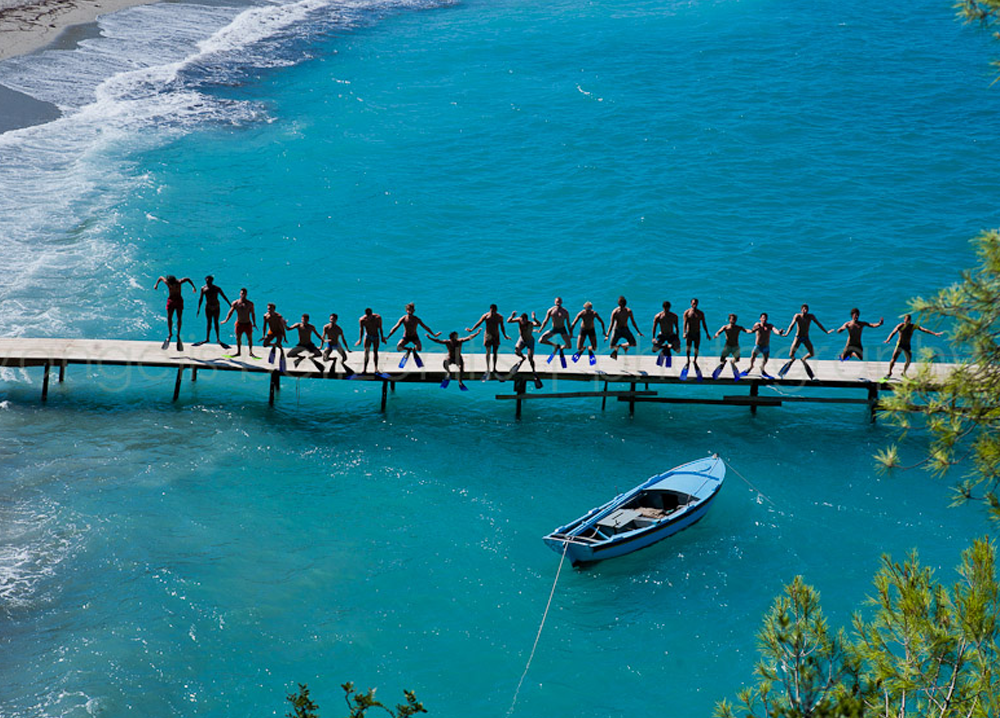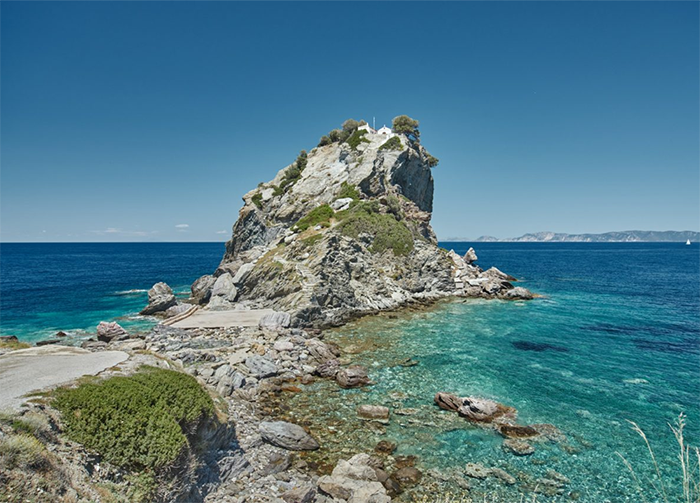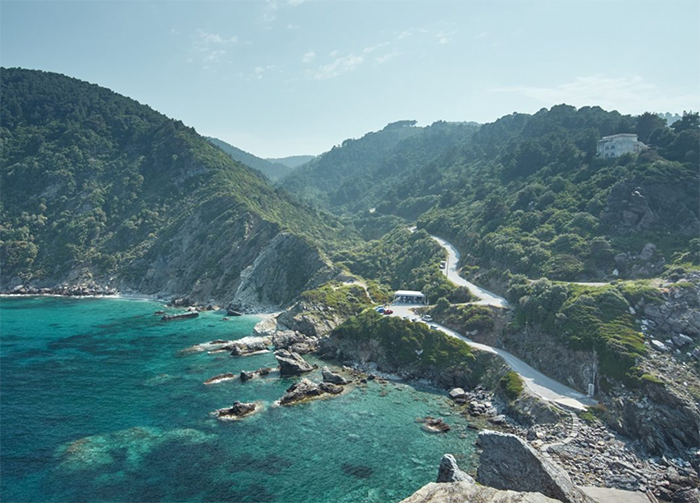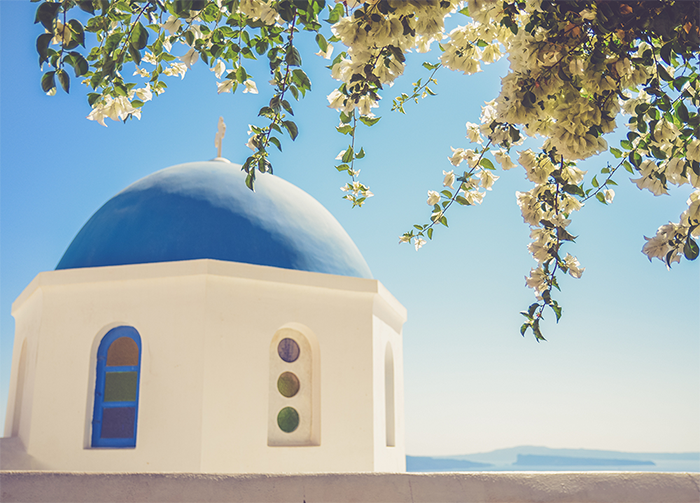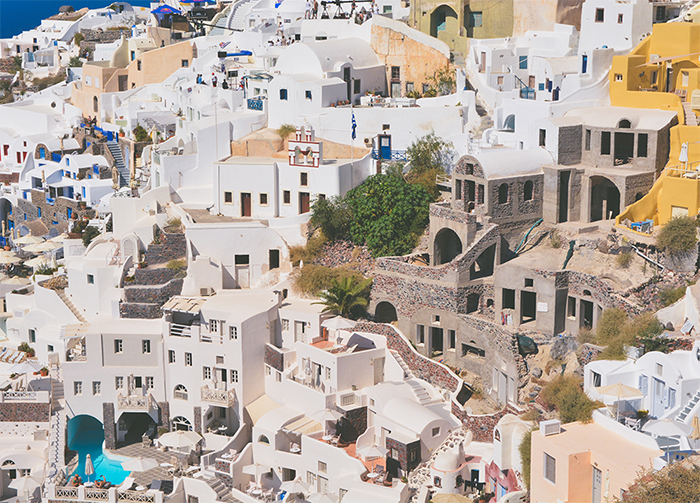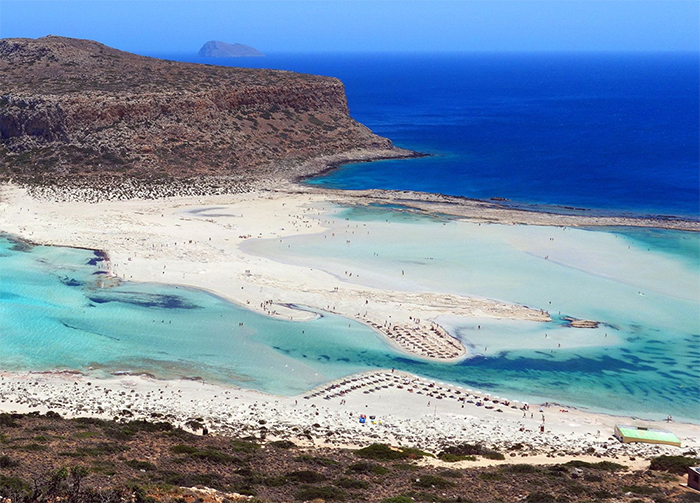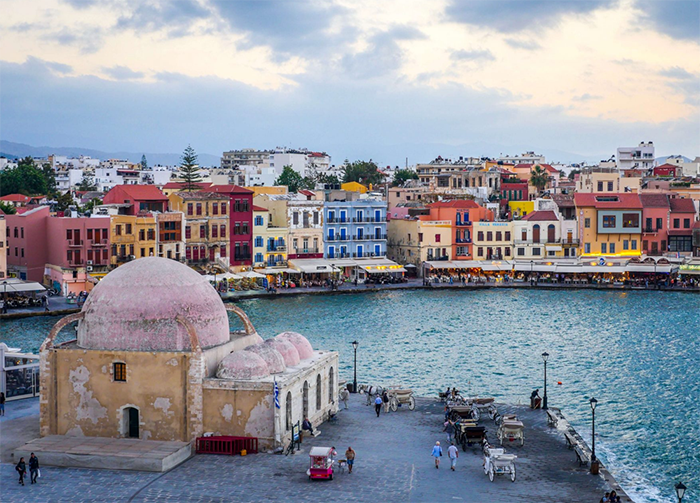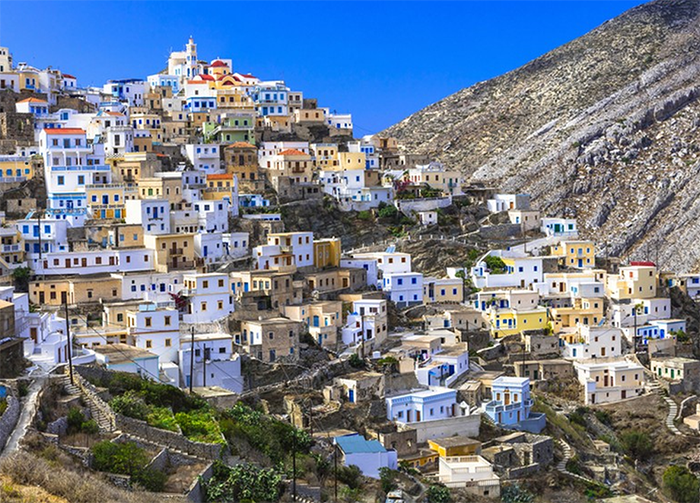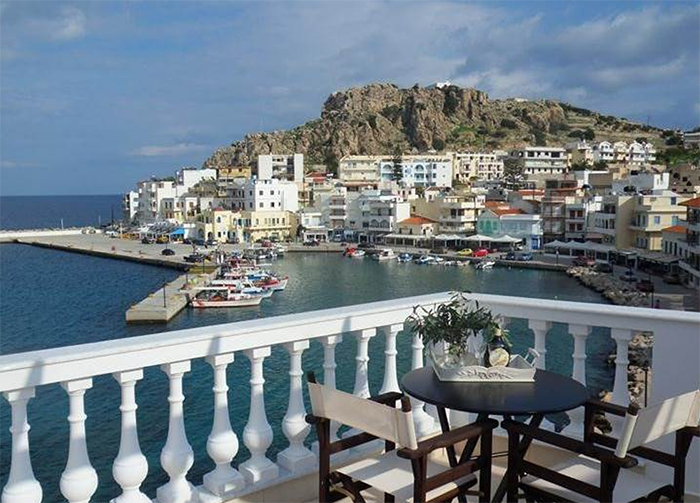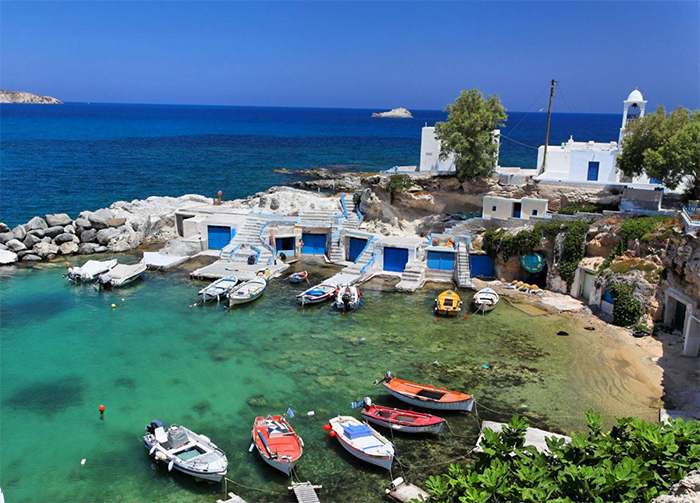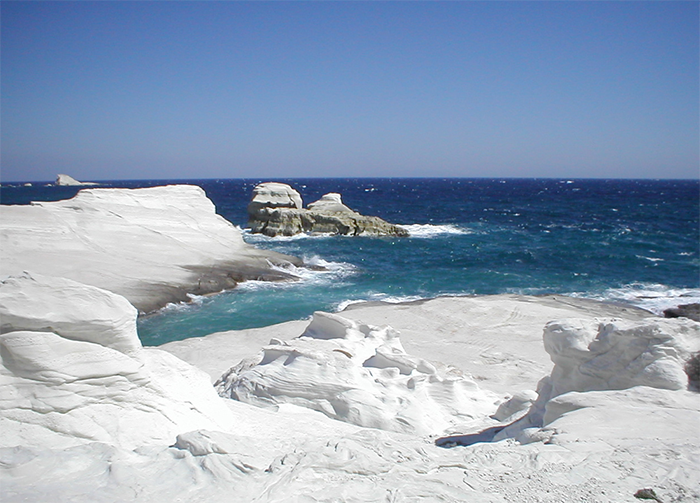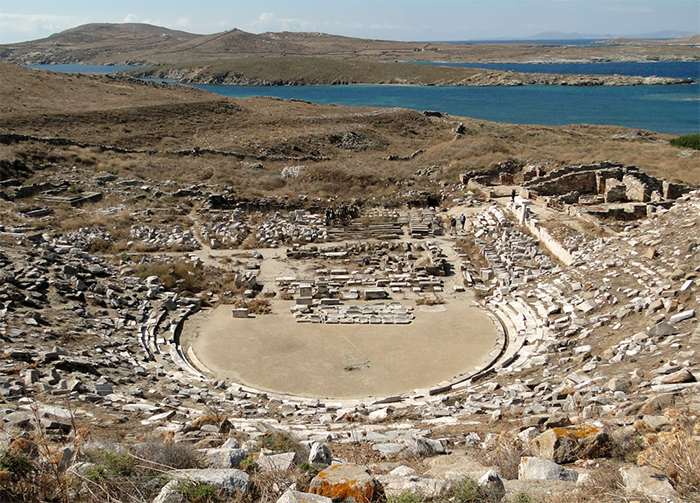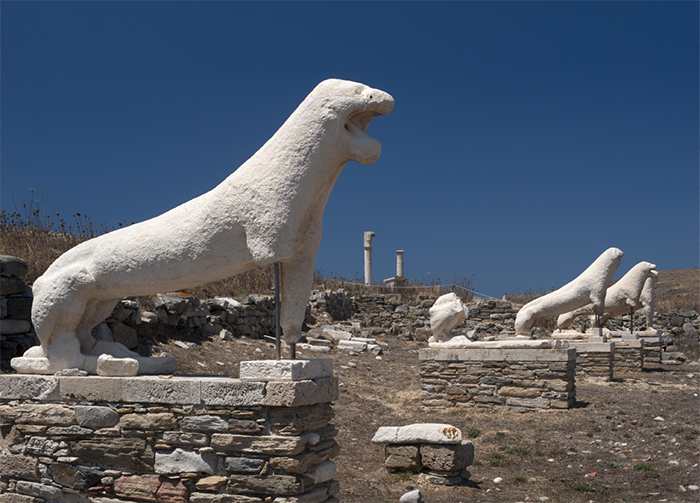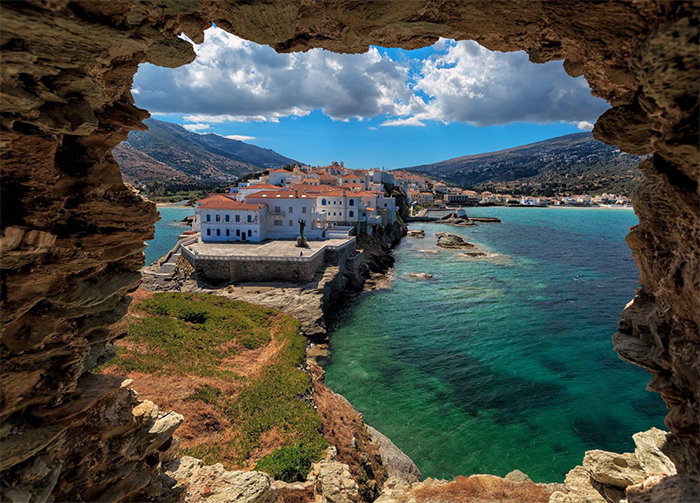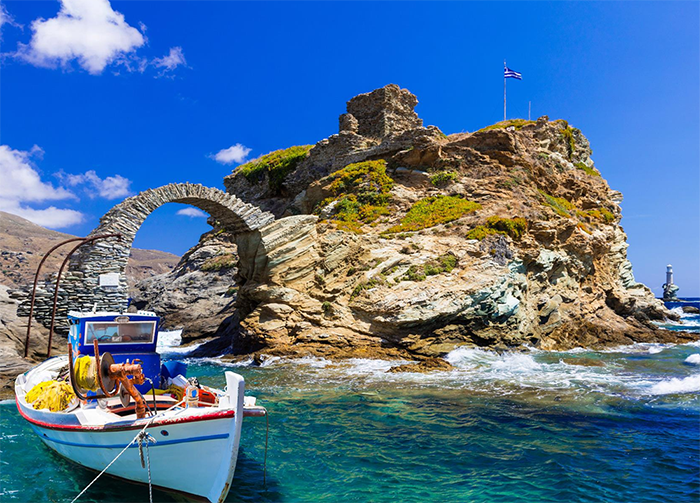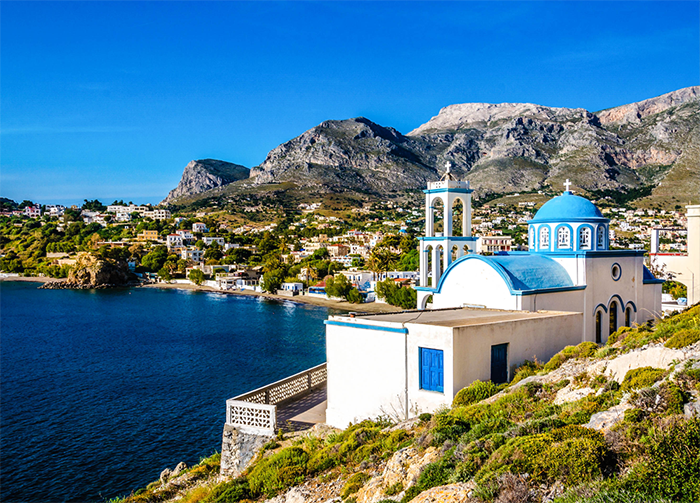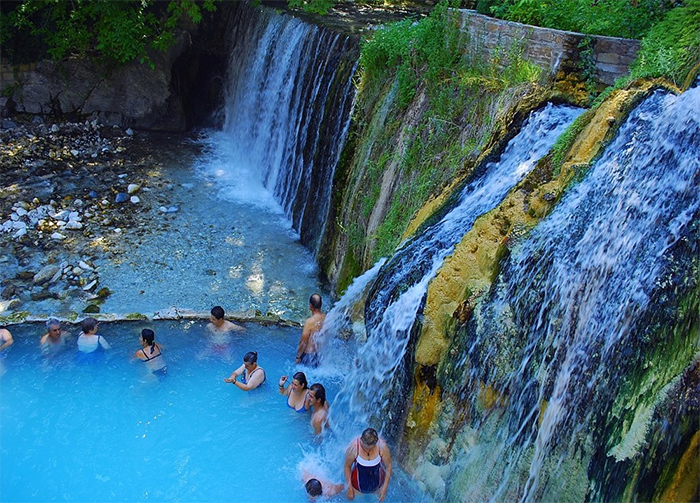Our 10 Favourite Greek Islands
Greece has 6,000 islands in total, scattered in the Aegean and Ionian Seas, of which only 227 are inhabited.
The total number of islands varies from source to source because of the changing definition of what is an island. Nevertheless, Greece is synonymous with islands. Less or more of them, there are certainly enough for anyone to spend a lifetime exploring them all.
Although we love them all, we have a few favourite ones. See if our list matches your top spots.
1. Skopelos, because Mamma Mia!
ABBA fans would understand!
Mamma Mia the Movie may be the best movie to inspire Greek travel since Summer Lovers way, way back in the early 1980s.
Let’s recap.
Kastani Bay and beach, where “Does Your Mother Know” was performed took place on Skopelos. There’s also Nisi Glisteri clifftop where ‘Our Last Summer’ was performed, and Agios Ioannis Prodromos Monastery, which is where the famous wedding scene was filmed.
If you run out of Mamma Mia! Scenes, you can always find a few smaller spots worth visiting, such as the old harbour, including Sam’s race with Harry and the clock tower where Sophia posts the invitations.
And if you satisfied your Mamma Mia-ness, we recommend you visit a quiet chapel near Agios Ioannis Beach – it’s lapped by crystal clear waters, and once you’ve climbed the 105 steps up to the chapel, you can grab a bite to eat at a traditional taverna overlooking the sea. Awwww paradise on Earth indeed!
2. Santorini, the best Instagram-Worthy Island
The Santorini hashtag has been used over 3 million times on Instagram, with endless pages of gorgeous views of this island. It’s surely got to be one of your favourite islands as well.
However, it’s not the digital presence that makes this isle so lovable but its beauty and history.
In Ancient times, Santorini Island was known as Stongili, which means round in Greek. Strongili was the victim of an enormous volcano eruption in 1,500 BC. It’s believed by many researchers that this was also the cause of the destruction of the great Minoan civilization on the island of Crete.
It’s thought that one of the first people to reach the island were the Phoenicians in the 13th century BC, who gave it the name Kallisti, meaning the most beautiful, as they were mesmerized by its extraordinary beauty. We all are today!
In history, Santorini played different roles at different times from having little economical political interest to becoming a vibrant and closed society. Although Santorini was indeed a closed community for some time it was slightly influenced by the neighboring islands. As a result, Santorini adopted the Phoenician alphabet for written Greek and later the residents started to make contacts with other Greek regions.
We truly admire the rugged landscape here, the volcanic soil that nurtures vineyards, and the sunsets, particularly from the village of Oia, are magical.
3. Crete, the Zeus’ home
Crete is Greece’s largest island and known for being home to the Ideon Cave, which was the birthplace of Zeus, according to Greek mythology.
Crete is also home to Chania, which will steal your heart. Pictures of the heavenly Balos lagoon in Chania are what keep us up at night, dreaming of travel. Wandering around the port, you’ll encounter the Venetian lighthouse, the Grand Arsenal, Kum Kapi and Halepa.
On Crete, you’ll find some of the most significant attractions in Greece: see the famous archaeological sites, visit important monasteries and wander around the castles of the region erected by Venetians and Byzantines.
We absolutely love the mythology of this island. Accordingly, the first queen of Crete was Europa. Later on, Crete island became the land of King Minos. The legend is that the king refused to sacrifice a bull to the gods and Poseidon punished him by making his wife fall in love with a bull. From this union the Minotaur was born and was hid in a labyrinth.
Crete has been the epicenter of a number of significant events in the history of the world: home to the Minoan civilization, the initial Roman occupation of the island, the brave resistance during the World War II which completely threw German soldiers off guard and of course today it’s one of the most beautiful getaways for many of us.
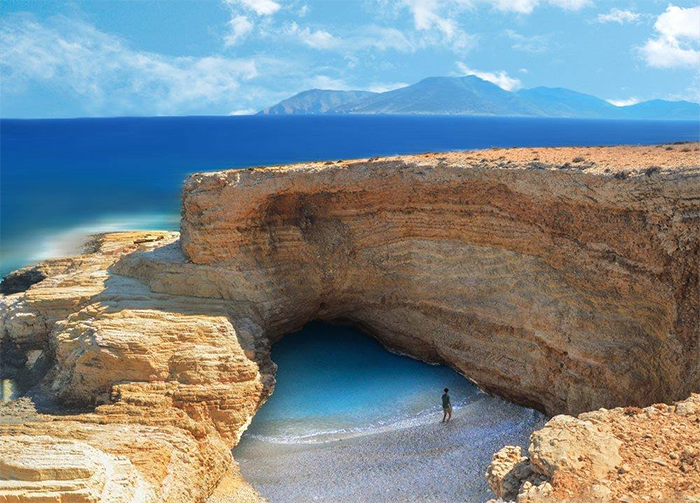
4. Koufonisia, the hidden gem
After exploring a bigger island, such as Crete, you might feel like getting lost on a much smaller piece of land in the sea, taking a breather from all this sightseeing.
Ano Koufonisia is a tiny satellite island of Naxos, with a population of around 400!
Koufonisia is a complex of two islands: Pano Koufonissi and Kato Koufonissi which are uninhabited and visited only for a beach trip from Pano Koufonissi. In the 80s and 90s, Koufonisia served as a secret hideaway for off-beat yet sophisticated Greeks and other visitors in the know.
Although the island’s six beaches are not serviced, there are places to enjoy a Greek salad or a mojito or two. A local bar is also opened till late, offering plenty of dancing and star gazing. Although small, more people are placing it on their bucket lists, so there will always be friends to make sipping cocktails together.
5. Karpathos, the late bloomer
It used to be a land of immigrants in the middle of nowhere, and totally disregarded by the world. Due to the secluded location and the distance from the other Greek islands, Karpathos island only started developing in the last decades. This is one of the least commercialised islands in Greece.
6. Milos, the breathtaking beaches
Milos waters are arguably the bluest waters in the Cyclades. This island is known for its 41 gorgeous beaches, with Kleftiko being one of our favourites.
Interestingly, only a few years ago, Milos was one of those quiet islands where you would only find empty beaches, very few taverns and nothing else. Today, it has become one of the trendy islands.
The island has a few educational perks for visits as well, including the archaeological museum where various artifacts from the excavations are housed, the church dedicated to the Virgin Mary, the Venetian Kastro, which is also worth a visit, many ancient ruins, as well as the spot where Aphrodite of Milos was found. In other words, you won’t be bored here!
7. Delos, the archeological site
Delos is a UNESCO world heritage site. In fact, nowhere else in the Globe is there a natural insular archaeological site of this size and importance. No other island on Earth hosts so many monumental antiquities from the Archaic, the Classical, and the Hellenistic periods, i.e. the centuries of the great Greek art, on a territory used exclusively as an archaeological site. Delos is not a museum; Delos is not there to tell a story. Delos is history itself.
Apart from being an island-museum, this small island doesn’t offer any advantages for habitation due to its barrenness and lack of water. In Greek mythology, this is precisely why Leto, escaping the wrath of Hera, was able to find sanctuary here in order to give birth to Apollo and Artemis.
There is another curious mythological story where Zeus (Leto’s lover) called on his brother Poseidon to create the island with a thrust of his trident, hence the name Delos, which signifies ‘appearance’ or ‘apparent’ in ancient Greek.
An island of wonder indeed!
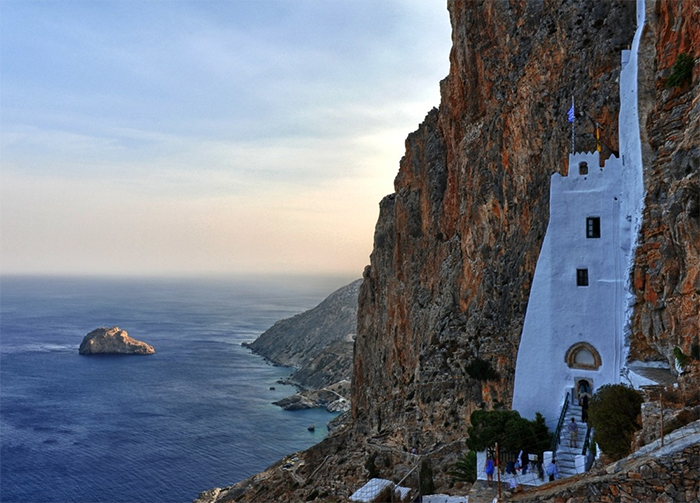
8. Amorgos, The Big Blue
Welcome to Amorgos. Nobody will find you here.
Amorgos’ virgin beauty inspired the filmmaker Luc Besson to shoot scenes of the movie The Big Blue in the beach of Agia Anna. Hidden-away Amorgos, with its secret beaches and untouched timelessness, is one of the most intriguing of all the Greek Islands.
Divers, walkers, loners or pilgrims, everyone who comes to Amorgos visits the monastery of Hozoviotissa, wedged into a cliff face 300 metres above the sea. The monastery is the second oldest in Greece, built in 1017.
And of course the island’s town is a piece of art in itself. Built at the centre of the island and surrounded by rocky hills, the maze-like Hóra of Amorgós is considered to be one of the most picturesque in the Cyclades!
9. Andros, the summer getaway
Andros is distinguished by the elegant architecture of Chora, the green landscape of the inland and the fabulous beaches. The heart of Andros Town, Chora, has a unique beauty due to the combination of Venetian, Byzantine and Ottoman architecture.
The globally acknowledged Museum of Modern Art on the island houses unique collections of paintings and sculptures, while the archaeological museums in Hóra and Paleópolis represent the ancient history of the island with their exhibits.
Andros is a paradise for hikers. A network of well-marked hiking paths covers the island. Get yourself a map and follow the arrows that will guide your journey, always with the big blue in the background.
10. Kos, Turkey’s neighbour
Located very close to the coast of Turkey, Kos island is the second most popular island of Dodecanese, after Rhodes. This is a long and thin island, and unlike many other Greek islands, it’s mostly flat and low-lying.
As well as the brash nightlife of Kos Town and a plethora of beach resorts, the island also boasts some of the best archaeological sites to be found in the Mediterranean.
According to Greek mythology, Kos is the sacred land of Asclepius, the god of healing. In 460 BC Hippocrates, the father of Medicine and founder of the first School of Medicine, was born. After his death in 357, the inhabitants of Kos built the sanctuary of Asklepeion honoring Hippocrates and the god Asklepios. It was used as a hospital, welcoming patients from all over the Mediterranean, with doctors who applied the therapeutic methods of Hippocrates. This is why the island is widely known as the healing one.
Visit The Castle of Antimachia when in Kos; it’s a magnificent fortress which was built by the Knights of St. John in the 14th century. The castle was built so that one could observe the waters separating Kos from the Turkish coast, and has clear visibility to the surrounding countryside. With only one entrance and exit, doubly fortified, it has withstood many attacks. You’ll love the view from up there!

